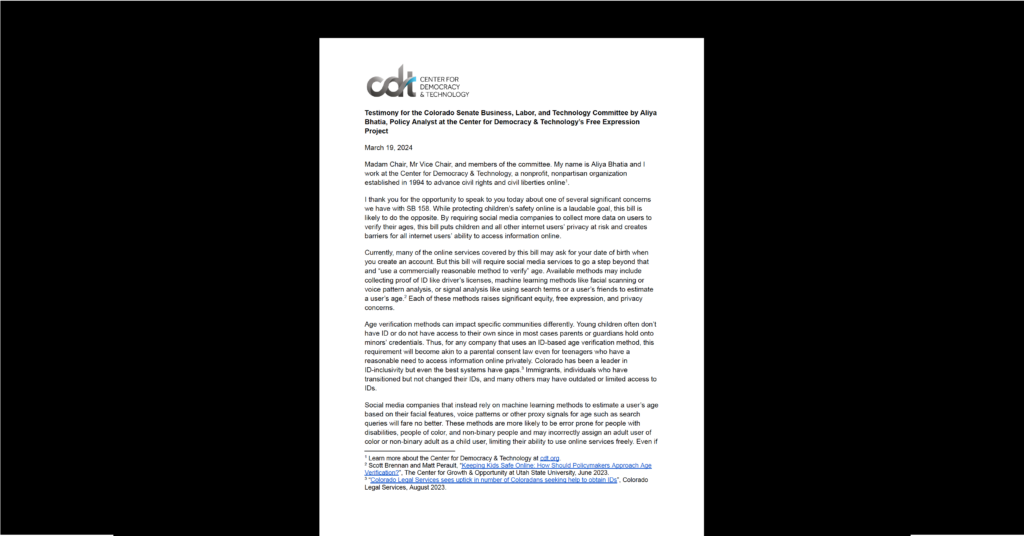Court Should Strip FCC of Indecency Authority
Last Thursday, CDT joined TechFreedom, Public Knowledge, EFF, and the Cato Institute in filing an amicus brief urging the Supreme Court to strike down the Federal Communications Commission’s broadcast indecency regulations, which have been outstripped by the modern media landscape. The case, FCC v. FOX, is the latest in a years-long battle over the FCC’s “fleeting expletives” policy, which allows the FCC to levy fines against broadcast networks that fail to censor incidental profanity. The Supreme Court, which heard this same case on procedural grounds in 2009, will be deciding whether the indecency-enforcement regime violates the First Amendment.
The FCC’s justification for policing indecent broadcast content rests on the Court’s 1978 decision FCC v. Pacifica, which permitted the FCC to punish a broadcast station for airing George Carlin’s “Seven Dirty Words” monologue, even though each of the seven words is protected speech under the First Amendment. Our coalition’s brief focuses on the dramatic changes to the media landscape since the Pacifica decision in 1978. At the time, broadcast media – which amounted to a handful of television channels and radio stations – was a principal source of news and entertainment for most of the country. And, according to the Pacifica Court, broadcast was like an “invader” into the home, barging in through the airwaves ready to assault children’s innocent eyes and ears with nudity and expletives that parents were powerless to stop.
However true this may have been in 1978, media platforms and parental control technology have radically proliferated in the intervening three decades. Today, only 15% of families (at most) rely on over-the-air broadcast for television content. The majority of Americans use other delivery systems – cable, satellite, telephone networks, DVDs, the Internet – to access broadcast content as well as a host of other programming. Rather than intruding into the home, most video content today is extended a specific invitation.
And parents have never had a greater ability to set technological limits and controls on what their children can watch. User empowerment technology has been recognized as the ‘least restrictive means’ to limit children’s access to indecent online content since the landmark Reno v. ACLU decision in 1997, where the Court extended the highest level of First Amendment protection to speech on the Internet. Today, parents can use filtering software and ISP-provided content control features to tailor their children’s online viewing options; offline, the V-chip, DVRs, and video-on-demand services enable parents to create menus of approved content that satisfies their family’s values.
In short, the rationale behind Pacifica no longer applies in today’s media environment. The FCC’s indecency regime no longer serves as the sole shield for children in the broadcast content audience, but it does stand between the adult audience and constitutionally protected speech. We urged the Court to acknowledge that changed factual circumstances have eroded the basis for the FCC’s broadcast indecency regulation and to strike down this policy of government censorship. (At least one vote on this point seems assured: Justice Thomas found that “dramatic technological advances have eviscerated the factual assumptions underlying Pacifica” in his concurrence to the 2009 opinion.) Video content deserves the same high level of First Amendment protection, whether it is accessed via broadcast or over the Internet. Because parents, not the government, should be in charge of choosing what their children watch.


